Though the modern world offers many conveniences, some homeowners prefer to take a more self-sufficient route by growing their own food and living off the land. Designing a kitchen to fit those needs was paramount for Joe and Becky Titlow, owners of The Bedford House in Bedford, Massachusetts., when they decided to renovate their kitchen. They wanted an ultrafunctional space that could accommodates growing vegetables, cooking from scratch, and preserving food. If you’d like to replicate their vision, learn how they did it in our guide.
Planning the Perfect Homestead Kitchen
When designing a kitchen for homesteading, prioritize function over form. “We grow vegetables and herbs, we cook most of our meals at home, we freeze foods in bulk, and we compost food waste,” Becky Titlow says. “The last thing we need is a kitchen that looks good but doesn’t function well. ”
This philosophy guided the Titlows as they worked with kitchen designer Kathy Marshall to create a space that seamlessly blends traditional elements with modern amenities. For your own project, consider your daily routines, from bringing in fresh produce to preserving the harvest. Incorporate features that support these activities, such as ample counter space for food prep, efficient storage solutions, and durable materials that can withstand heavy use.
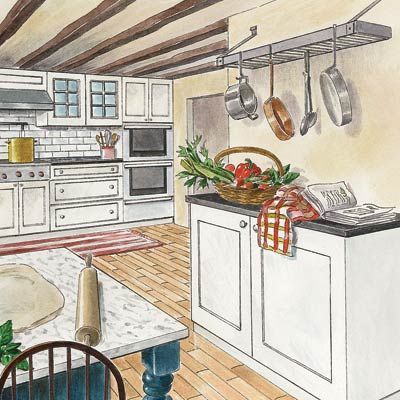
The Homesteader’s Kitchen (and Pantry) Floor Plan
The Titlows’ plan includes a multitasking island with seating, a large pantry with a deep freezer, and ample workspace for various cooking and preserving activities. When designing your kitchen layout, consider the flow between different work zones. Make sure there’s enough space for multiple people to work comfortably and that high-use areas like the sink, stove, and refrigerator are easily accessible.
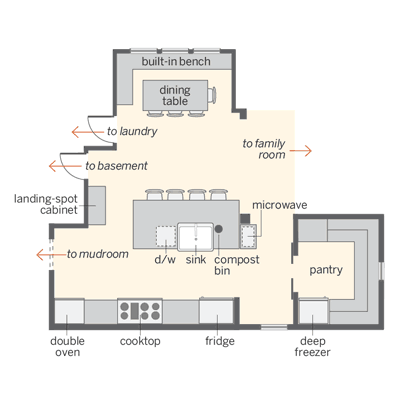
Features of a Modern Homestead Kitchen
Next, we’ll dive into more depth on design and function choices the Titlows made in their homestead kitchen renovation.
Modern Function, Farmhouse Flair
While utility is crucial, don’t forget the rustic charm. The Titlows achieved this by incorporating a six-burner range top, providing ample space for cooking large batches of homemade sauces and sautéing freshly harvested vegetables. This professional-grade appliance offers the power and precision needed for serious home cooking while maintaining the warmth of a farmhouse kitchen.
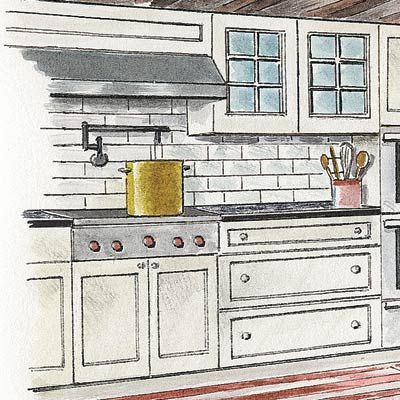
To capture the farmhouse style, consider open shelving for displaying preserved goods or frequently used cookware. Opt for natural materials like wood and stone to create a warm, inviting atmosphere. Incorporate vintage-inspired lighting fixtures or repurposed items as decorative elements to add character and reinforce the homesteading theme. The combination of these elements helps the kitchen remain practical and visually appealing.
Double Convection Ovens
If you love to bake, double convection wall ovens are a game-changer. The Titlows, avid pizza makers, chose this setup so they could bake multiple dishes at once. This feature is particularly useful during harvest season when processing large quantities of produce or preparing meals for storage.
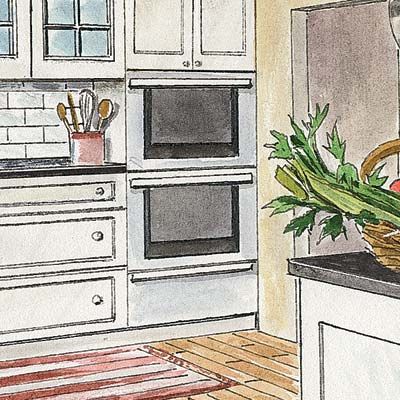
Double ovens also offer versatility for different cooking methods. Use one oven for slow-roasting vegetables while the other bakes bread or dehydrates herbs. This efficiency allows you to engage in batch cooking or food preservation projects. With the added capacity, you can easily manage large cooking tasks and streamline your food production process.
Pot Rack
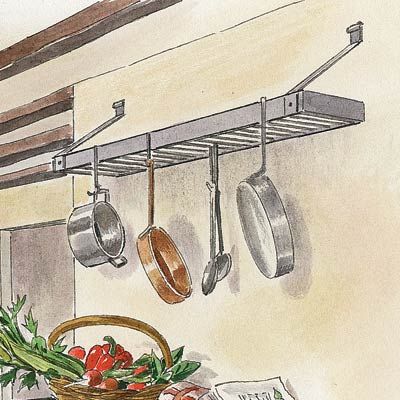
A pot rack is both functional and visually pleasing in a homesteader’s kitchen. It keeps frequently used cookware within easy reach, saving valuable cabinet space.
When installing a pot rack, position it at a comfortable height and securely anchor it to support the weight of your cookware. Consider grouping pots and pans by size or frequency of use for easy access. A well-organized pot rack can become a focal point in your kitchen, showcasing your collection of cast iron skillets or copper pots.
A Granite Landing Spot
Create a dedicated landing spot for fresh produce and groceries. The Titlows incorporated a granite-topped cabinet for this purpose. This area serves as a transition zone between the garden and the kitchen, allowing for easy sorting and cleaning of freshly harvested vegetables.
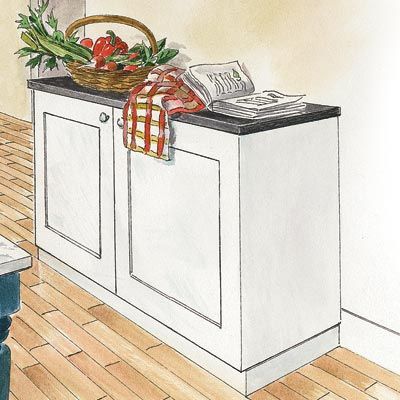
When designing your landing spot, consider including a small sink nearby for rinsing produce. Choose a durable, easy-to-clean surface like granite or quartz that can withstand the wear and tear of daily use. Incorporate storage below for harvest baskets or reusable grocery bags to keep the area organized and functional.
A Multifunctional Island
A well-designed island is the centerpiece of a homesteader’s kitchen. The Titlows’ island features turned furniture-style legs, adding a traditional touch that complements the wood floors and exposed ceiling timbers.
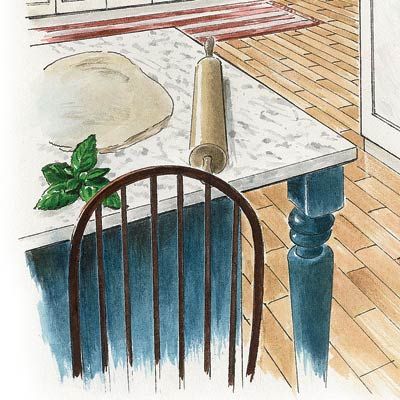
When planning your kitchen island, consider incorporating features that support your homesteading activities. This might include a built-in compost bin, a butcher block section for food prep, or additional storage for preserving equipment. The island should be large enough to accommodate multiple tasks simultaneously, from canning to baking.
Designers like Cynthia Bennett of South Pasadena, California, have noticed increased demand for elements such as ventilated storage drawers for vegetables, separate pantries, and built-in bread boxes. There’s also a move towards larger, farmhouse-style sinks that offer more functionality for washing produce and handling large cooking projects. These can be incorporated into the island for a more efficient space.
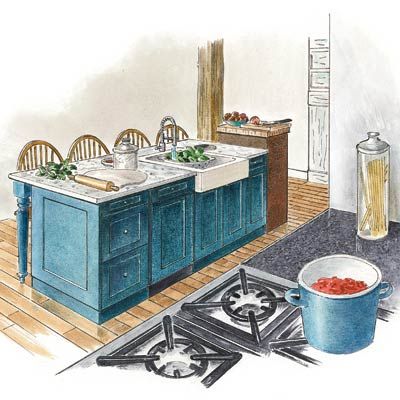
Marble Countertops
Marble countertops are a classic choice for homesteaders who enjoy baking. The Titlows opted for a traditional marble-slab countertop on their work island. Marble’s natural coolness makes it ideal for working with dough, keeping it at the perfect consistency for rolling out pizza crusts or pastries.

While marble requires more maintenance than some other countertop materials, its benefits for bakers often outweigh this drawback. To protect your marble, consider using cutting boards and trivets, and be prepared to seal the surface periodically to prevent staining. This combination allows you to enjoy the visual and functional benefits of marble without the hassle of excessive maintenance.
Farmhouse Sink
A generous farmhouse sink is a must-have for many homesteaders. The Titlows’ kitchen features a spacious sink that provides ample room for washing produce, soaking large pots, or preparing foods for canning. The deep basin and wide opening make it easier to handle bulky items or clean multiple dishes at once.
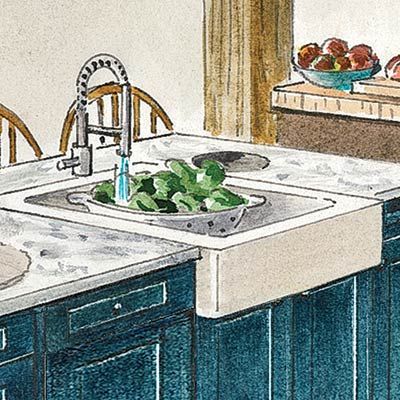
When selecting a farmhouse sink, consider the material carefully. Fireclay and stainless steel are popular choices due to their durability and ease of maintenance. Make sure the sink is properly supported, as farmhouse styles can be quite heavy when filled with water. This thoughtful consideration makes your sink serve your homesteading needs efficiently while adding a touch of rustic charm to your kitchen.
Countertop Cutout
Composting is an integral part of many homesteaders’ routines, and the Titlows incorporated this into their kitchen design with a clever countertop cutout. This feature allows food scraps to be easily swept into a removable bin, streamlining the process of collecting compostable materials.
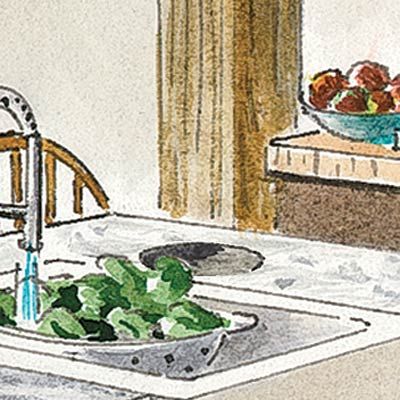
When implementing a similar system, consider the placement carefully. Ideally, the cutout should be near your main food prep area but away from high-traffic zones. Make sure the bin is easily accessible for frequent emptying and cleaning. This setup can make composting a seamless part of your cooking routine, promoting sustainability without sacrificing convenience.
Microwave Tuck-Away
Even dedicated home cooks occasionally need to reheat leftovers quickly. The Titlows’ kitchen design includes a microwave tucked into a handsome dark walnut end cabinet, maintaining the kitchen’s style while providing modern convenience. The cabinet is topped with a butcher block, offering additional workspace.
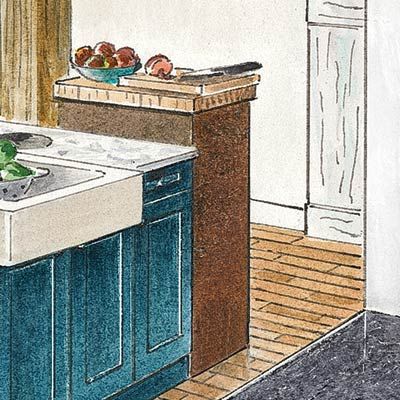
When incorporating a microwave into your kitchen, consider its placement carefully. Tucking it away in a cabinet or pantry can help maintain a more traditional look while still keeping it accessible for daily use.
Kitchen Island Seating
Incorporating seating at the kitchen island creates a welcoming space for family and guests to gather. The Titlows’ island includes comfortable seats, providing a spot for others to watch the cooking action or lend a hand with food prep.
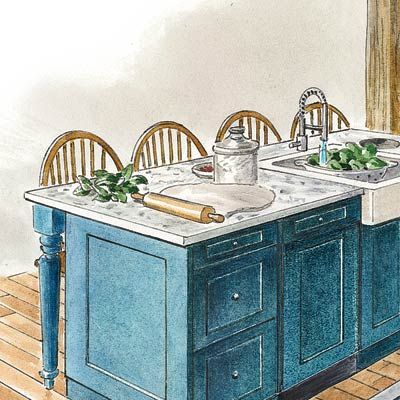
When designing island seating, consider the height and depth of the overhang for comfort. Choose stools or chairs that complement your kitchen’s style while being easy to clean—an important factor in a busy homesteader’s kitchen. This consideration makes your kitchen a central gathering place for everyone.
A Fully Loaded Pantry
The Titlows’ pantry includes a deep freezer for storing homemade soups, stews, and sauces, as well as bulk purchases. This setup allows them to preserve their harvest and take advantage of seasonal produce year-round.
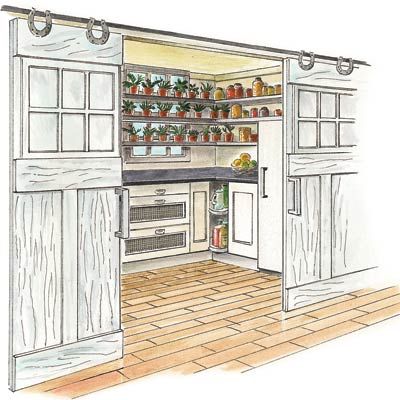
When designing your pantry, consider incorporating a variety of storage solutions. Adjustable shelving, pull-out drawers, and dedicated spaces for appliances like food dehydrators or vacuum sealers can help maximize efficiency. Don’t forget to include proper ventilation and temperature control to keep your stored goods in the best condition.
Salvaged Pantry Doors
Adding character to your kitchen can be as simple as incorporating salvaged elements. The Titlows plan to use two salvaged wood doors as sliders to close off their separate pantry. This feature not only adds visual interest but also aligns with the sustainable ethos of homesteading.
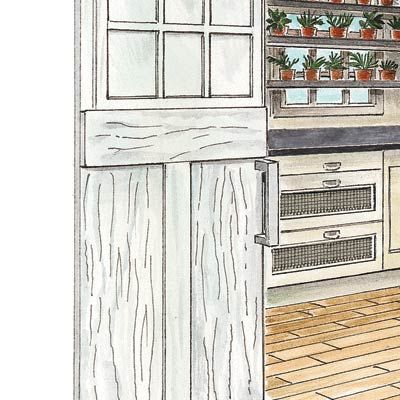
When using salvaged materials, check that they’re properly cleaned and treated to prevent any issues with pests or decay. Consider how the patina and wear of old wood can add depth and history to your kitchen’s design. This approach adds a unique touch, blending sustainability with style.
Ventilated Drawers
Proper storage for root vegetables is necessary if you plan to grow your own produce. The Titlows are considering ventilated drawers with mesh fronts to keep root vegetables fresh. These drawers allow air circulation while protecting the vegetables from direct sunlight.
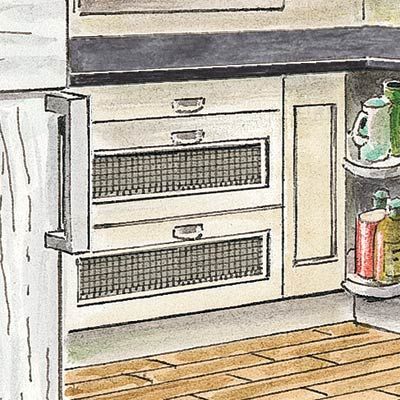
When incorporating ventilated storage, consider the humidity levels in your kitchen and adjust accordingly. Some vegetables, like potatoes, prefer darker, cooler environments, while others may benefit from more airflow.
Corner Cabinets
Maximizing storage in your kitchen often means making the most of every nook and cranny. The Titlows’ design includes covered lazy-Susan corner cabinets to organize canned goods and other pantry staples for easy access.
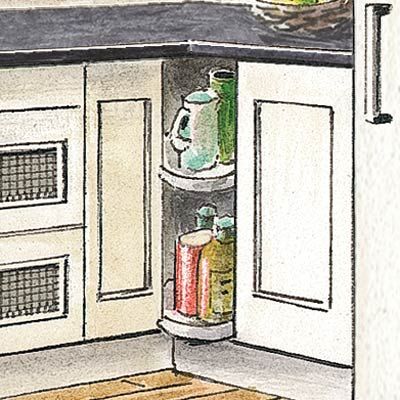
When planning corner storage, consider the items you’ll be storing and how frequently you’ll need to access them. Lazy Susans work well for smaller items, while pull-out systems might be better for larger pots and pans. This optimization helps make your kitchen space more functional and accessible, utilizing every inch efficiently.
Open Shelves
Open shelving in front of a window provides the perfect spot for growing fresh herbs year-round. This feature allows you to have easy access to fresh flavors even when the outdoor garden is dormant. When installing open shelves for herbs, make sure they receive adequate sunlight and are easily accessible for watering and harvesting. Consider using attractive pots or planters that complement your kitchen’s decor. This setup not only adds a touch of greenery to your space but also provides utility by keeping fresh herbs within arm’s reach.
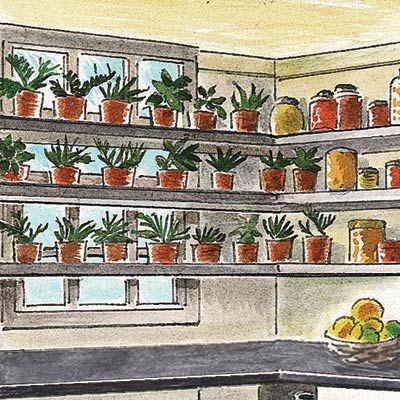
Pantry Freezer
A deep freezer in the pantry is a game-changer for homesteaders. Becky plans to use theirs to store homemade soups and sauces, allowing the family to enjoy their garden’s bounty even in the off-season.
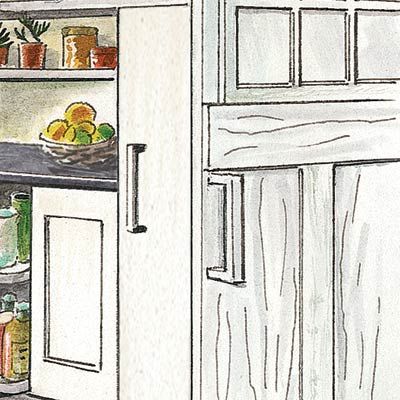
When selecting a freezer, consider your family’s needs and the amount of food you typically preserve. Chest freezers often offer more space but can be less organized, while upright freezers provide easier access but may have less overall capacity.
Modern Homestead Kitchen Organization Tips
The Titlows’ renovation didn’t stop with the big-ticket items. They also put a lot of thought into the small organizational details. Here are a few of their tips.
Smarter Storage
For dry goods, consider using 64-ounce mason jars to store flour, sugar, beans, and grains. These airtight containers help keep ingredients fresh and make it easy to see when supplies are running low.
When organizing your pantry, group similar items together and label containers clearly. Consider using clear storage solutions to make it easy to identify contents at a glance. This method can improve your kitchen’s organization.
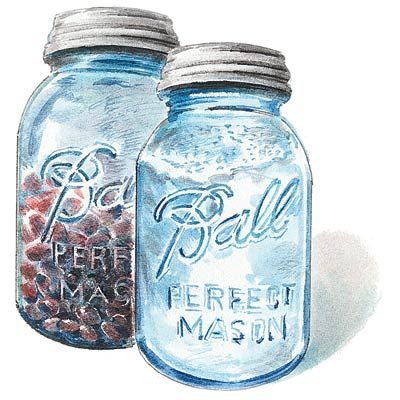
To Keep Bread Fresh
A charming rolltop oak bread box is not just a decorative element; it serves a practical purpose by maintaining an ideal humidity level for bread storage. This traditional solution helps keep homemade bread fresh for longer without taking up valuable refrigerator space. When choosing a bread box, look for one with good ventilation to prevent mold growth. Position it in a cool, dry area of your kitchen for optimal bread preservation.

Root Veggie Basket
A wicker potato basket provides an attractive and functional storage solution for root vegetables. The basket allows air circulation while protecting the vegetables from light, helping to extend their shelf life.
When storing root vegetables, know that different types have different ideal conditions. Potatoes, for example, prefer cooler, darker environments, while onions can tolerate slightly warmer temperatures.
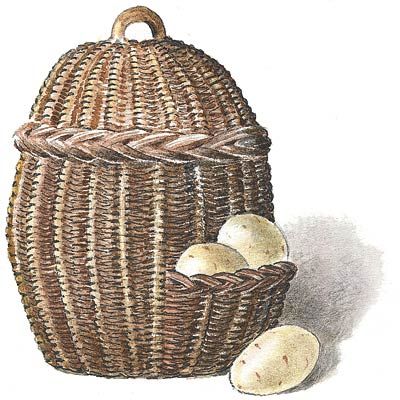
Freezer-to-Oven Storage
Glass bowls with BPA-free lids that can withstand extreme temperature changes are invaluable for homesteaders who batch cook and freeze meals. These versatile containers allow you to freeze portions and then transfer them directly to the oven for reheating.
When selecting freezer-to-oven containers, look for high-quality, tempered glass that can handle thermal shock. Always follow manufacturer guidelines for safe use and avoid sudden temperature changes that could cause the glass to break. This practical solution can add convenience to your meal preparation and storage process.
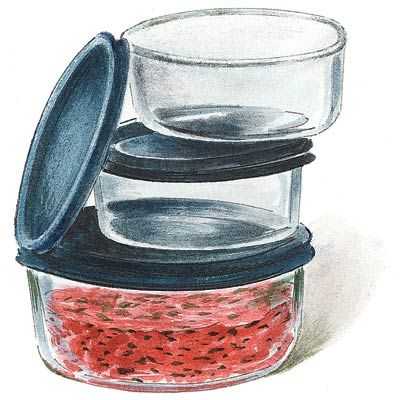
Our Conclusion
Renovating a kitchen to suit a homesteading lifestyle is often a gradual process. The Titlows’ project involved major changes, including tearing down a large brick fireplace to open up the floor plan. This step-by-step approach allows homesteaders to refine their space as they learn more about their needs and preferences.
When undertaking a major renovation, be prepared for unexpected challenges and opportunities. Flexibility and patience are key as you work towards creating your ideal homesteader’s kitchen. This ongoing process can lead to a space that evolves with you, adapting to new routines and improving functionality over time.
